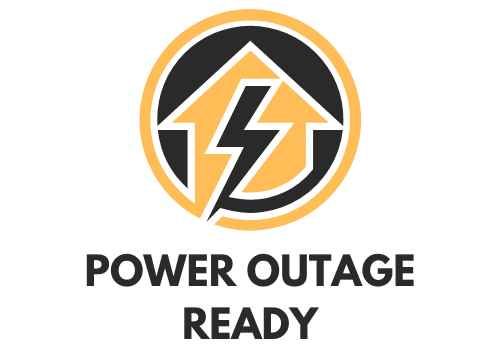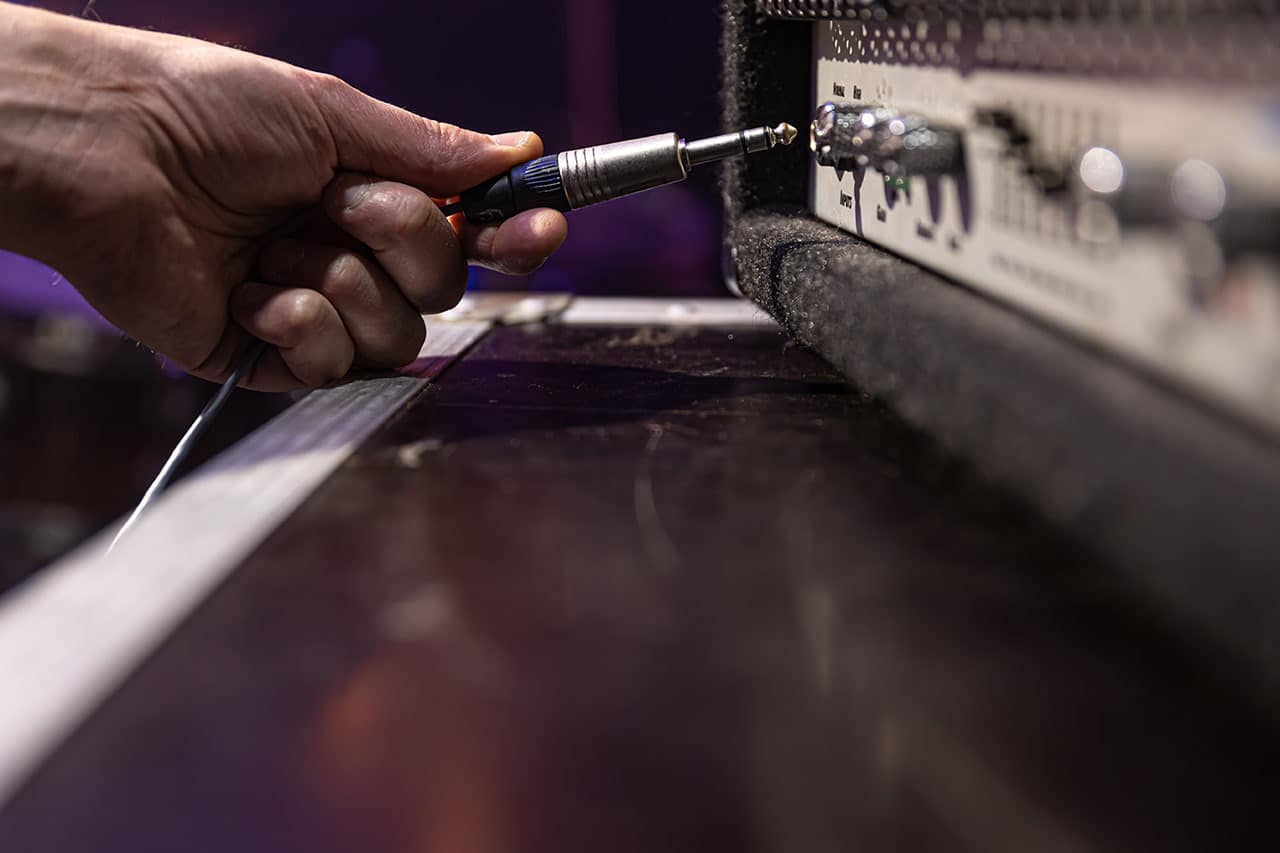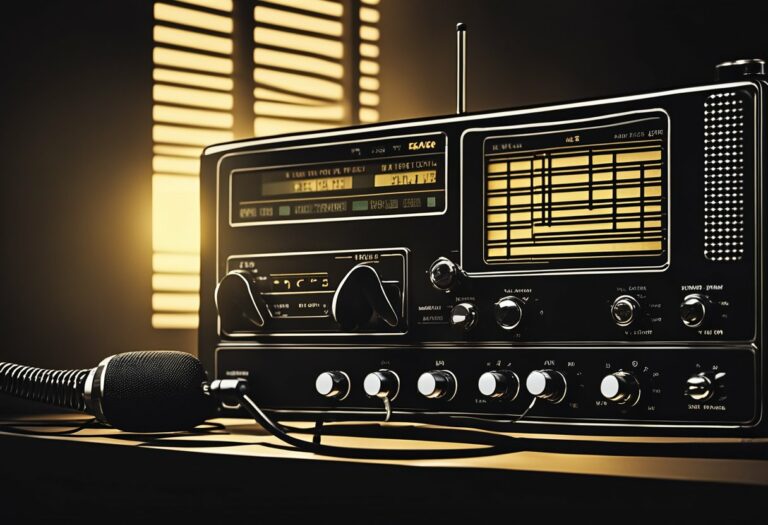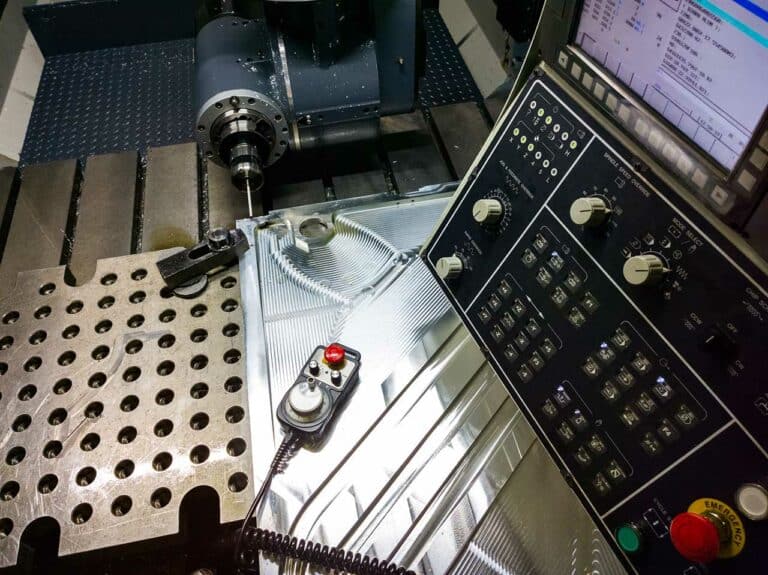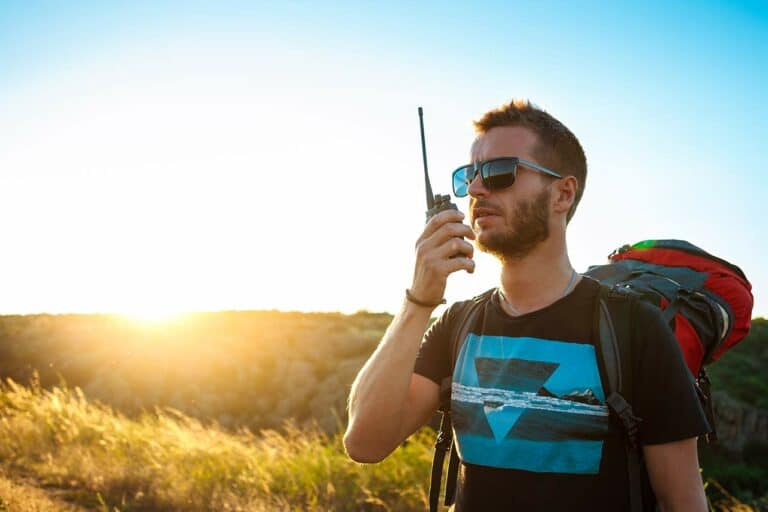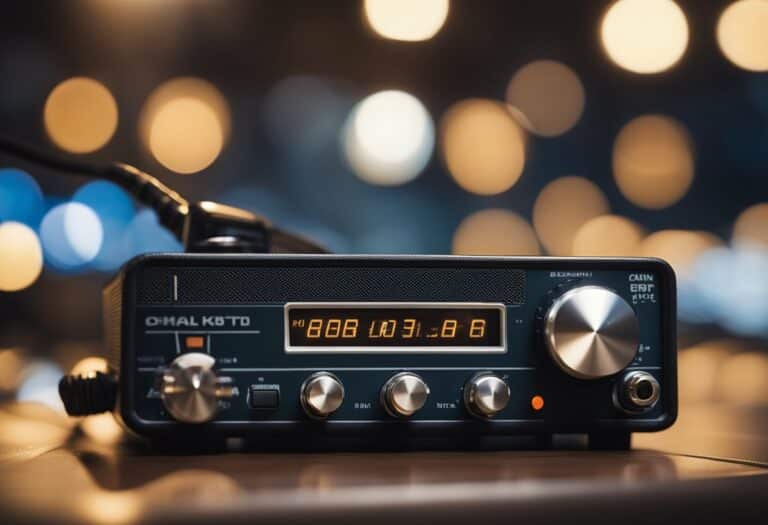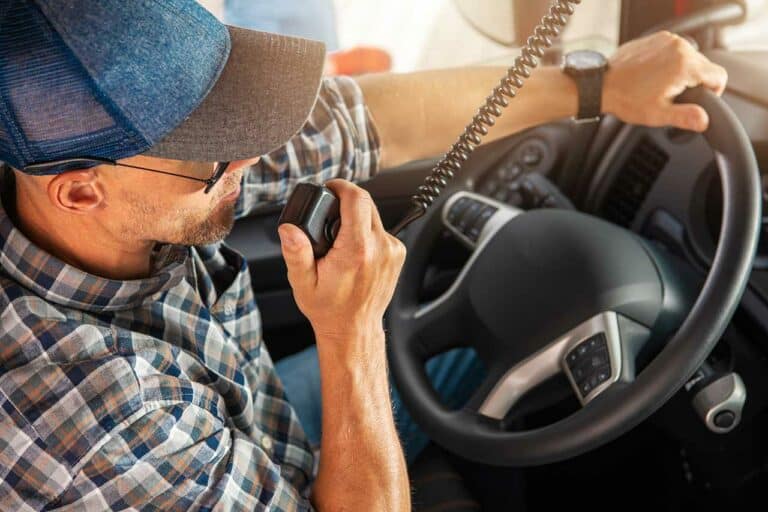Using A Ham Radio Basics (Tips For Beginners)
Ham radio, or amateur radio, is a popular hobby and communication tool that allows enthusiasts to connect with people around the world, exchange information, and even provide emergency assistance when needed. At its core, ham radio is all about using radio frequencies to send and receive voice, Morse code, or digital signals through antennas. If you’re new to this method of communication, understanding the basics is essential to utilizing, and enjoying, the full range of experiences it offers.
To get started with ham radio, you’ll need to learn about the different radio frequencies and bands allocated for amateur use. These frequencies allow you to tap into various communication modes, such as short and long-range transmissions, depending on your equipment and conditions. Familiarizing yourself with antennas is also important, as they play a crucial role in transmitting and receiving signals. Building or choosing the right antenna for your needs will help you achieve better performance and range.
Another essential aspect of ham radio is obtaining your license, which will grant you access to operate on specific frequencies and bands. Licensing also ensures that you have the necessary knowledge to operate your radio equipment safely and responsibly. With a solid understanding of ham radio basics, you’re well on your way to enjoying this dynamic and rewarding hobby. So, grab your transceiver and start exploring the fascinating world of amateur radio communication.
Getting Your Ham Radio License
To operate a ham radio legally, you need a license. So, let’s dive right into the process of obtaining your ham radio license from the Federal Communications Commission (FCC). We’ll cover the three different types of licenses: Technician License, General License, and Extra Class License.
Technician License
The Technician license is your entry point into the world of ham radio. To snag this license, you’ll have to pass a 35-question exam on radio theory, regulations, and operating practices. With the Technician license, you’ll gain access to all Amateur Radio frequencies above 30 megahertz, letting you communicate locally and also (usually) within the bounds of North America. This is almost always enough for using a ham radio in emergency situations.
Here’s what you need to do to get your Technician license:
- Study: Hit those books or find some online courses to grasp the required knowledge.
- Exam: Register for an in-person or remote exam in your area or online. They’re held regularly.
- License: Pass that exam like a champ, and you’ll receive your unique callsign and Technician license.
General License
Wanna unlock more ability with your ham radio? The General License is your next step up. This license grants you added privileges to operate on more frequencies and communicate globally. But, before you can upgrade, you need to:
- Study: Brush up on your Technician knowledge and focus on learning about the additional frequencies.
- Exam: Pass another 35-question exam that goes more in-depth.
- License: With the exam aced, you’ll receive your General License, opening up the world of global communication.
Extra Class License
Finally, welcome to the top tier of ham radio licenses: the Extra Class License. This license gives you access to even more frequencies and exclusive privileges. You probably won’t need an Extra Class license for operating a ham radio in an emergency, but if you decided to go this route, you’ll need to:
- Study: Dig deep into advanced material, electronics, and radio wave propagation.
- Exam: Brace yourself for a 50-question exam. One final grind to reach the summit.
- License: Reach that finish line strong, pass the exam, and join the prestigious Extra Class license holders.
Technician, General, and Extra Class licenses each grant you different levels of access and privileges in the ham radio world. The good news for those wary test-takers is that, if you’re getting your ham radio for emergencies like power outages, you likely won’t need to go above Technician level.
Ham Radio Equipment
Transceiver and Receiver
A key part of your ham radio setup is the transceiver, which allows you to both transmit and receive on allowed frequencies. Transceivers come in various types, such as:
- Fixed desktop: These are stationary and often used in home base stations.
- Mobile: Installed in vehicles, mobile transceivers are perfect for on-the-go communications.
- Handheld radio: Portable and convenient, these are great for outdoor adventures or emergencies like power outages.
You’ll also need a receiver to pick up signals from other ham radio operators. Most transceivers have built-in receivers, but you’ll want to make sure.
Antenna Types and Usage
Antennas are essential for sending and receiving radio waves. Here are some common types to consider:
- Vertical antennas: These are efficient and take up little space, making them ideal for small yards or mobile setups. They’re generally omnidirectional, so you don’t need to adjust them to catch signals.
- Dipole antennas: Often called “wire antennas,” these are easy to install and versatile, typically covering various frequencies.
- Yagi antennas: Geared towards long-distance communication, Yagi antennas are directional and great for connecting with specific distant stations.
- Microwave antennas: For higher frequency ranges (above 1 GHz), these antennas can enable communication via satellites or Earth-Moon-Earth transmissions.
Think about your intended usage, location, and budget when choosing the right antenna for your ham radio setup.
Generally speaking, a vertical or dipole antenna will be plenty sufficient for an emergency ham radio.
Power Supply
Your ham radio equipment will need a reliable power source during a blackout. Here are your options when the grid goes down:
- Battery: Portable setups with handheld radios or mobile transceivers often rely on rechargeable batteries. Check your equipment’s power requirements when selecting the right battery.
- Alternative power sources: In case of an outage, solar panels or generators can provide power to your ham radio gear.
Radio Frequencies and Bands
Before getting started with ham radio, you’ll need some understanding of its available frequencies.
VHF and UHF Frequencies
When you’re getting started with ham radio, it’s important to understand the VHF (Very High Frequency) and UHF (Ultra-High Frequency) band. VHF ranges from 30MHz to 300MHz, while UHF ranges from 300MHz to 3GHz. These bands are typically used for local radio communications, with UHF having a shorter range compared to VHF. Here are some key points to remember:
- VHF is often used for FM radio and marine communications.
- UHF is commonly associated with TV broadcasts, mobile phones, and CB radio.
- Dual-band radios can handle both VHF and UHF frequencies, providing more flexibility in your communications.
- UHF and CB will likely be your go-to options in an emergency.
HF Operation
HF (High Frequency) bands, ranging from 3MHz to 30MHz, are an essential aspect of ham radio. These bands allow for long-distance communications, as the radio waves can bounce off the Earth’s ionosphere and travel much farther than VHF/UHF signals. Some aspects to consider when working with HF bands are:
- Radio wave propagation heavily depends on atmospheric conditions, including solar flares and cloud cover. This can be a problem during power outages caused by storms.
- HF radios usually require larger antennas compared to VHF/UHF setups.
- For beginners, starting with the 10 meter (28MHz) band is recommended as it offers a good balance between range and ease of use.
Radio Wave Propagation
Understanding how radio waves propagate is crucial for effective communication. Radio wave propagation refers to the behavior of radio waves as they travel through space, and various factors like radio frequency, antenna type, atmospheric conditions, and solar activity affect this.
Factors influencing propagation:
- Lower frequencies (HF) can bounce off the ionosphere, leading to longer communication distances.
- VHF and UHF frequencies usually follow a direct line of sight, limiting them to shorter ranges and often requiring repeater systems to extend the coverage area.
- Radio wave behavior can vary depending on the time of day, as well as the solar cycle.
By grasping these concepts and the differences between HF, VHF, and UHF bands, you’ll be on your way to successful ham radio communication.
Modes of Communication
Now, we’re getting into the meat of it. Here, we get into what ham radios can actually do.
Simplex and Duplex Communication
When using a ham radio, it’s crucial to understand the two primary modes of communication: Simplex and Duplex. In simplex communication, you transmit and receive on the same frequency. This can be effective for short-range contacts, but it might be challenging if multiple users are operating on the same frequency, as is likely during an emergency, as they might interfere with one another.
On the other hand, duplex communication uses two separate frequencies for transmitting and receiving. With this setup, you typically have a repeater that acts as an intermediary, boosting the transmission range and helping to prevent interference. Ham radio operators use repeaters to communicate over vast distances or around obstacles that would otherwise obstruct a simplex signal. So, when you’re planning your communication setup, consider whether simplex or duplex is the better option for your specific needs.
DXing
Another aspect of ham radio communication is DXing. It’s a popular activity in which operators attempt to establish contacts with other hams across long distances, often in different countries. If you’re into DXing, focus on using the high-frequency (HF) bands that enable long-distance communications.
A good strategy for successful DXing is to understand and use the different propagation modes that ham radio operators have at their disposal, such as:
- Ground wave: Travels along the Earth’s surface, useful for short-range contacts
- Skywave: Bounces off the ionosphere, enabling long-range communication
- Sporadic E: A seasonal propagation mode that relies on the ionosphere’s occasional scattering of unusually high-band signals
Lastly, keep in mind that DXing can be competitive. DXers frequently participate in contests and events to test their skills and see how many contacts they can make in a given timeframe. As a newcomer, don’t be afraid to dive in and start DXing. You likely won’t need it during a blackout, but it’s a great way to improve your skills and discover different aspects of ham radio communication.
Usage of Ham Radio
There are two major aspects of ham radio usage that will come in useful during a blackout. These are:
Emergency Services Communication
Ham radios are indispensable tools for emergency services communication. As an operator, you can use your skills and equipment to communicate with others during disasters, such as blackouts. You’ll play a vital role in sharing crucial information and coordinating rescue efforts in real-time.
Ham radio operators often participate in the Amateur Radio Emergency Service (ARES) or Radio Amateur Civil Emergency Service (RACES) to get involved in these activities. By joining a local ham radio club, you’ll be able to network with like-minded individuals and build your skills for effective emergency communication using receivers and transmitters.
For Satellite and Weather Monitoring
Ham radio is also used for satellite and weather monitoring. With a suitable receiver and antenna setup, you can directly communicate with various satellites, including amateur radio, weather, and low-Earth orbit (LEO) satellites.
You can receive data on weather conditions, track satellites, and even monitor telemetry data. Some dedicated amateur radio operators decode images and weather data from satellites using digital signal processing techniques. This knowledge helps in understanding propagation and weather patterns affecting radio communication, and can be helpful in a power outage caused by weather.
How To Use A Ham Radio: Basic Steps
Now that you know the basics of what a ham radio can do and what it’s typically used for, it might be helpful to know how to actually use one. Here’s a very simple guide on getting started:
Set Up Your Equipment
Find a suitable location for your radio. This should be a place free from electronic interference, away from other devices and appliances.
Connect the power source and antenna to your radio. Ensure all connections are secure.
Power On
Turn on your radio using the power button or switch.
Familiarize yourself with the basic controls: volume, squelch, frequency dial, and mode selectors.
Select a Frequency Band
Ham radios operate on various bands. For beginners, the 2-meter (VHF) and 70-centimeter (UHF) bands are popular starting points.
Use the frequency dial or keypad to select your desired frequency.
Listen In
Once you’ve selected a frequency, adjust the volume and squelch controls to clearly hear transmissions.
Spend some time listening to familiarize yourself with the communication style and etiquette.
Make a Transmission
Before you transmit, ensure you’re licensed to operate on the chosen frequency.
Press the transmit (often labeled “PTT” or “Push-to-Talk”) button and speak clearly into the microphone.
Always identify yourself with your call sign at the beginning and end of your transmission.
Respect the Code
Remember, ham radio isn’t just a hobby—it’s a community. Always follow the established protocols and be respectful to other operators.
Log Your Contacts
It’s good practice to maintain a log of your communications. Note the date, time, frequency, and call sign of stations you contact.
This can be even more vital in times of emergency.
The Resonance of Ham Radio
In today’s digital age, where we heavily rely on the internet and cellular networks, it’s easy to forget how vulnerable our communication infrastructure can be. Power outages, natural disasters, and unforeseen events can swiftly disrupt our most trusted means of communication. This is where the age-old technology of ham radio comes to the forefront.
Ham radio isn’t just a hobby; it’s a lifeline in emergencies. As you dive deeper into the world of radio frequencies, remember you’re equipping yourself with a tool that can be invaluable during crises. With the ability to communicate across towns, countries, or even continents without the need for internet or cellular grids, ham radios provide a direct link when most needed.
